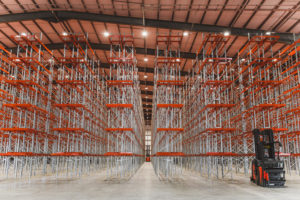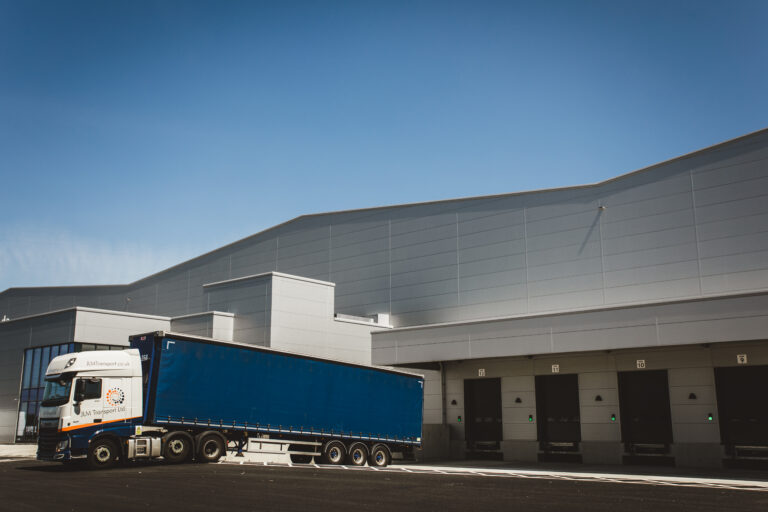Nick Bradley speaks with Mike Thomas from Delamode about the new multi-million-pound DC at the Port of Southampton and discovers its importance for the UK and Europe as well
At the beginning of the Covid-19 pandemic, expectations were that containerised trade would fall off a cliff. Yet demand for container shipping actually grew after the initial blip. Why? Among other factors, the changes in consumption and shopping patterns triggered by the pandemic – including the surge in e-commerce resulting from the lockdown – led to increased import demand for manufactured consumer goods, a large part of which is moved in shipping containers.
Disruption ahead?
The pandemic was just one disruption, albeit a major one. We’re also still reeling from the effects of one of the largest container ships in the world, the Ever Given, becoming wedged in the Suez Canal, which back in March blocked the key trading route for nearly a week. About 12% of global trade passes through the Suez and the incident sparked a global shipping crisis and held up £6.5 billion in international trade a day. This was felt all around the world – in fact, it still is today.
Although these examples are on the severe scale, such disruptions are not uncommon, according to Mike Thomas, Client Services Director at Delamode, who has overseen the recent construction of a new £23 million distribution centre built on the Port of Southampton. Cargo ships transport around 80% of the goods that the world imports and exports, so when ports slow down, the global trading system is disrupted. The Port of Southampton’s new addition is expected to keep everything moving.

As one of the UK’s busiest and most successful ports, Southampton is a natural choice for a wide range of customers and trades, with facilities to handle virtually any type of cargo.
Thomas believes that the new 200,000ft2 DC is an essential ingredient in strengthening Southampton’s port-centric logistics capacity. Its natural deep-water harbour allows for unrestricted access for the world’s largest vessels.
It’s a very busy place, with the second-largest container terminal in the UK, which handles around 14 million tonnes of cargo every year.
Investing in the future
Thomas feels investment into the port is vital for the UK supply chain sector. “The port-centric location and close proximity to the container port – 100m away from where the deep-sea container ships dock – ensures optimum route to market, which alleviates the need to transport containers inland to distribution centres, in doing so cutting time, cost and carbon from supply chains,” he says.
The new DC, which adjoins Delamode’s existing distribution hub, will now have the capability to hold more stock under for order processing and distribution across the UK, continental Europe and global markets.
Technology takes centre stage
Technology has really taken centre stage at Delamode International Logistics’ new Southampton DC. “With such an impressive building, we knew we had to explore the latest technology to keep up,” says Mike Thomas.
“To assist the unloading process, four new mobile boom conveyors enable belts to move between doors. Plus the rider can be elevated, which again is an improvement on previous designs we operate at the receiving bays.
“We have installed wire-guided navigation tracking in the racking aisles to operate with the VNA trucks,” Thomas continues. “The equipment will allow us to eventually place and retrieve pallets automatically within the racking, moving faster to improve efficiency and operate at this greater scale.”
The new VNAs can also position pallets at 15m high within racking and Delamode has taken delivery of six vehicles initially, with more on order as the new racking zones fill.
“As technology improves, we are adopting and integrating this into our operations. Having worked in warehousing and logistics for over 20 years, the latest machinery we’re now using in the extended DC is most welcome – it’s also identifying challenges in our warehousing processes, which we will continually invest in tackling to meet the growing demands of logistics supply chains.”
Thomas reveals that the amount of carbon generated by the logistics industry has been a factor in the thinking behind the substantial investment. Port-centric distribution reduces supply chain emissions while the use of back-haul working with retailers can realise further carbon reductions. This port-centric model, with this new distribution centre specifically, will allow Delamode to take important steps forward in tackling time, cost and carbon – the three key components of supply chains.
The warehouse itself has been designed to BREEAM ‘Excellent’ in close collaboration with port owner ABP and features a further £2.5 million roof-mounted solar array investment from ABP. “I think it’s the largest solar array on a building certainly in the south of the UK,” Thomas states. “It generates a tremendous amount of energy, which the port needs for materials handling equipment.”

The warehouse also features 24 new access doors plus very narrow aisle pallet storage configuration and state-of-the-art equipment and systems, which are designed to boost throughput for containers and road vehicles.
“To actually have a warehousing facility that can meet the UK’s global trade needs and also to be able to act as a bonded facility for serving other jurisdictions – particularly in Central Europe, where some 40% of our throughput ends up – is something that we’re thrilled about,” Thomas enthuses.
To complete the project, with materials and labour shortages, is an achievement in itself. “The contractors were superb,” confirms Thomas. “After starting off on track, we did see some materials shortages about halfway through. I guess we ended up being about four or five months later than we anticipated to open, but we finally got the keys at the end of May and we’ve been readying the building ever since. The seven-high racking is in, the VNA trucks have been delivered.
Exciting times
“What’s exciting about the capacity and the efficiency here is the capability to turn stock as we move into different sectors. So, the VNA is operating at twice the pace of a standard reach truck, the capability to put away and retrieve double cycle and eventually to automate the cranes that we’re putting in here, is all part of our future plans. We’re moving into +60,000 pallets under one roof here at the port now.
“It’s been an interesting journey through the pandemic period,” says Thomas. “We thought there might be some respite but in fact the take up has been tremendous. Just the sheer volume of products moving to market has been been surprisingly good. This new facility enables us to discharge containers efficiently, process orders and deliver straight to the point of demand. We haven’t always had the capacity to meet demand, but now we’ll meet that demand and also capture additional market share by being able to offer superior port-centric logistics services. The timing of this expansion could also work favourably with the UK’s move outside of the European Union.”







